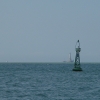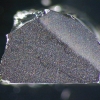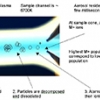Articles
The determination of elemental impurities in vitamin B12 supplements using triple quadrupole ICP-MS
This article sets out to demonstrate the accurate determination of elemental impurities, especially As, in vitamin B12 according to USP chapter <233>.
Determination of macroelements in potable waters with cell-based inductively-coupled plasma mass spectrometry
With a wide range of concentrations of elements in potable waters, their accurate determination is difficult with ICP-MS. It is possible, using a cell-based instrument, to “tune” the signal sensitivity of particular elements and so keep all them within the dynamic range of the instrument.
Direct analysis of trace elements in estuarine waters using triple-quadrupole inductively coupled plasma-mass spectrometry
Estuaries are where much of our marine pollution is to be found, being the gateway between the land and the ocean. They are also where much of our seafood comes. So, knowledge of elemental contamination in estuaries is vital to protect us from the ingestion of polluted seafood.
The transparent witness: forensic examination of glass evidence at the Bundeskriminalamt
This article is is a fascinating look into the use of laser ablation inductively coupled plasma mass spectrometry in forensic examination of glass fragments. These are often associated with crime scenes and easily “attach” to any people near them. Thus, they can be used to link criminals to their crime and to provide information on where a glass fragment might have originated.
The use of inductively coupled plasma mass spectrometry to quantify chemical hazards in natural history collections: arsenic and mercury in taxidermy bird specimens
Stanislav Strekopytov tells us about “The use of inductively coupled plasma mass spectrometry to quantify chemical hazards in natural history collections: arsenic and mercury in taxidermy bird specimens”. It is quite shocking to learn about the use of poisons to preserve taxidermy specimens in the past. Nowadays it is essential that the dangers from such specimens are known before they can be handled by museum staff and particularly if they might be touched by visitors. ICP-MS analysis provides fully quantitative information on bulk contents of toxic elements in taxidermy specimens and so is well suited to this task.
The impact of water pollution with chromium and nickel to the food chain
Sotiris Stasinos and Ioannis Zabetakis have used ICP-MS to investigate the cross-contamination of food crops by heavy metals in ground or irrigation water. They show that this can occur easily in certain crops, which has serious health consequences for those consuming the food crop. As a consequence of their work, the European Food Safety Authority (EFSA) has been informed about the accumulation of Cr and Ni in food tubers and is taking action.
Arsenic speciation: a tool for assessing the environmental toxicology of arsenic using earthworms and toenails as biomarkers
This article highlights the versatility of the developed methodology for the measurement of arsenic species in a range of materials from Devon Great Consols (DGC), one of many former mining sites in the south- west of England.
Squeezing out the last drop: LA-ICP-MS analysis of liquid droplets trapped in crystals
The scientific study of fluid inclusions goes back to the middle of the 19th century. Geochemists have sought for years to find techniques that would allow them to analyse the contents of these small liquid bubbles, but the challenge is formidable. After the progressive development of techniques that yielded results for optimal samples, Laser Ablation Inductively Coupled Plasma Mass Spectrometry has at last provided a means of analysing individual fluid inclusions in typical, rather than exceptional, samples.
ICP-mass spectrometry: Let the isotopes do the talking!
Inductively coupled plasma-mass spectrometry (ICP-MS) was introduced commercially in 1983 as a very sensitive analytical technique to be deployed for (ultra)trace element analysis. Compared to the previously existing techniques of atomic absorption spectrometry (AAS) and ICP-optical emission spectrometry (ICP-OES), the main advantages offered by ICP-MS over these techniques were its pronounced multi-element capabilities and substantially higher detection power, respectively.
Recent advances in in situ U-Pb dating of geological events by laser ablation inductively coupled plasma mass spectrometry
Teresa Jeffries,a Craig Storeyb and Javier Fernandez-Suarezc
aDepartment of Mineralogy, The Natural History Museum, London, SW7 5BD, UK. E-mail: [email protected]
bDepartment of Earth Sciences, The Open University, Milton Keynes, MK7 6AA, UK
cUniversidad Complutense de Madrid, Facultad de Ciencias Geológicas, s/n - 28040, Madrid, Spain
ICP-MS: determination of long-lived radionuclides
J. Sabine Becker
Central Department of Analytical Chemistry, Research Centre Jülich, D-52425 Jülich, Germany
Optimising ICP-MS for the determination of trace metals in high matrix samples
Ever since the development of inductively coupled plasma-mass spectrometry in the mid 1980s, there have been certain applications or specific analyses that have been regarded as difficult or impossible to address using the technique. This article explores the optimisation of the technique in high matrix samples.








